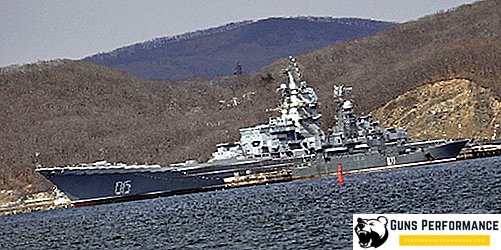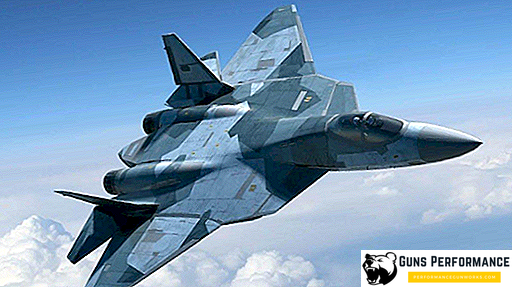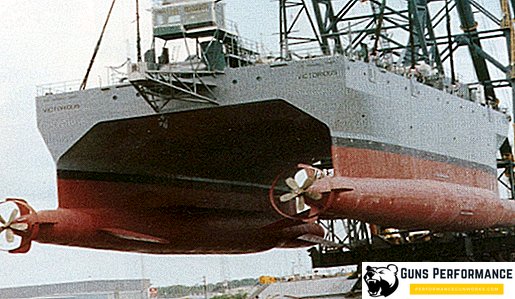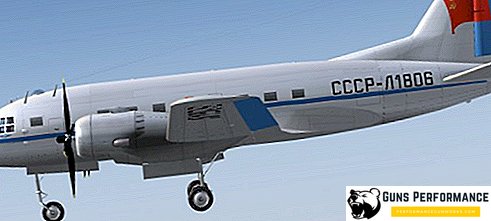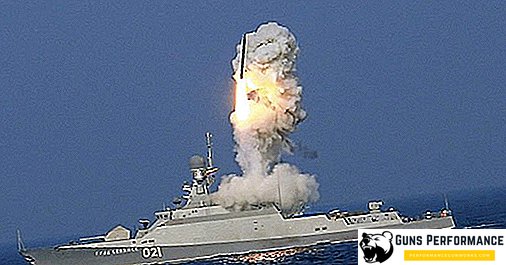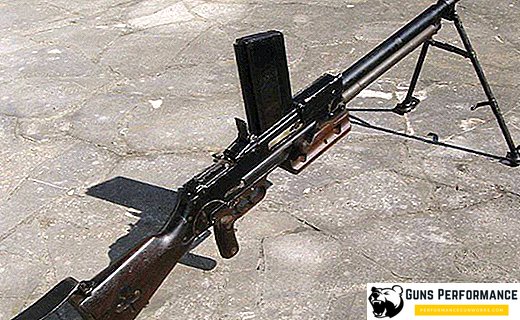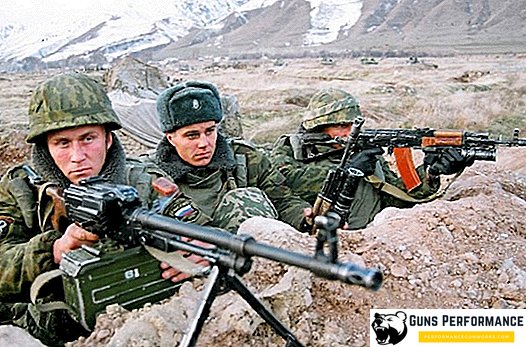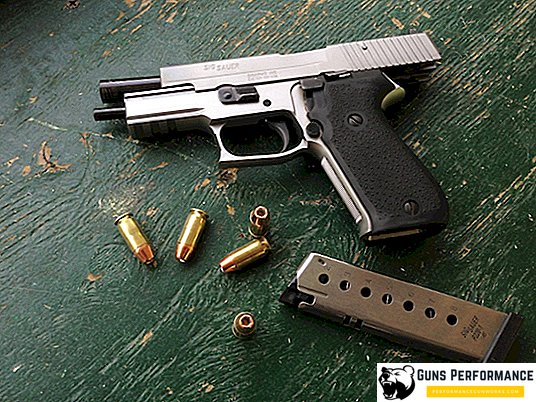
Currently, the basis of the fighter aircraft of the Air Force of all countries of the world, without exception, are fourth-generation vehicles. Only the US can boast of well-established serial production of fifth-generation fighter jets. New machines are being developed in Russia, China, Japan and other countries, but all of them are at the test stage at best. However, in spite of this, conversations about the development of the sixth generation fighter are already beginning.
The creation of the fifth generation of the American aircraft F-22 Raptor began in the first half of the 80s, and the prototype of the machine took to the air in 1990. Few people know that a fifth-generation fighter has already been built in Russia. Work on the creation of a fundamentally new machine began in the Soviet Union, at the end of the 70s. The result of this project was the creation of the MiG 1.44 MFI, the first flight of which took place in 2000. The development of the fighter engaged experts OKB. Mikoyan.
This aircraft had new engines with a variable thrust vector, in its design technologies were used to reduce radar visibility, it was planned to equip it with the latest electronics and weapons.
However, it didn’t go further than creating a single prototype - in 2002 it was decided to start work on the PAK FA in the Sukhoi Design Bureau, which put an end to the MiG 1.44 project.
The MiG 1.44 is our response to the American F-22 Raptor fighter. According to experts, the Soviet aircraft in its number of characteristics significantly exceeded its overseas opponent.
There is information that in the early 90s in the OKB im. Mikoyan developed a light fighter with a single engine in the same pattern ("duck") as the MiG 1.44.
This plane can be safely called another victim of the collapse of the Soviet Union: in 1991, the OKB Design Bureau. Mikoyan simply did not find the money to continue a promising, but very expensive project.

History of the MiG 1.44 MFI
At the turn of the 80s in the USA and the USSR, the requirements for a new generation fighter were formulated in general terms. The main features of the new machine were supposed to be super-maneuverability, low visibility for radar, the ability to fly at supersonic speeds without turning on the boost and equipping the machine with fundamentally new on-board equipment. Also, the new aircraft had to be different multifunctionality, that is, to be able to hit not only air, but also ground targets.
In the Soviet Union, work on a new aircraft began in 1979. The program received the designation "I-90" (fighter 90-ies). The development of the machine involved OKB them. Mikoyan, the aircraft was intended for both the Russian Air Force and the country's air defense. The fifth generation fighter was supposed to replace the Su-27 and MiG-31.
In 1983, a program of further work on the aircraft, on its power plant, on-board electronics was developed and approved. It took into account the requirements of air defense and air force.
Around the same time, it became known about the existence of the American program to create a fifth-generation ATF fighter (Advanced Tactical Fighter). Therefore, at the state level, the project was immediately supported: a joint decision of the Council of Ministers and the Central Committee on the dates, stages of the program was adopted. Also designated were those responsible for its promotion.

The appearance of the future fighter was formed with the participation of specialists from leading aviation research institutes of the country, the military clearly formulated their requirements. They were based on the formula of "three C":
- stealth;
- supersonic cruising speed;
- maneuverability.
To implement these rather contradictory requirements, large-scale research was carried out. The design of the MFI (multifunctional front-line fighter) was significantly different from the design of fourth-generation vehicles, which were put into operation around the same time.
The developers had to abandon the integral layout, the wing lost its influx - a characteristic feature of the Su-27 and MiG-29, new control surfaces were created. In the guise of a new fighter clearly visible features of the MiG-25 - a high-speed interceptor fighter with unique speed characteristics.
After the end of the research phase, the aerodynamic concept of the new fighter was as follows:
- Aerodynamic scheme "duck", which was beneficial both in terms of maneuverability of the machine, and in relation to its bearing properties.
- A small area triangular wing with a sweep on the leading edge of 40-45 °.
- The engine with a variable thrust vectoring, which improved the take-off characteristics of the aircraft and significantly increased its maneuverability.
- The location of the air intake under the fuselage of the fighter, which reduced the radar visibility of the machine.
- Internal placement of weapons.

The advance design of the new fighter was ready in 1985. It consisted of two parts: the project of a multifunctional front-line fighter and an air defense aircraft and the project of a light front-line fighter. It was assumed a high degree of unification of both machines. In 1986, the Design Bureau. Mikoyan successfully defended avanproekt. The stage of its finishing and implementation in metal began.
For bringing the aircraft were used not only blowing in the wind tunnel, but also research on large-scale controlled models. They were dropped from a helicopter. The tests were conducted at the site near Aktobe. All work was carried out in strict secrecy: launches occurred only between the spans of Western reconnaissance satellites, models were carefully camouflaged and selected in minutes after launch.
The first prototype under the designation 1.42 was built by the beginning of 1994. In the course of its creation, the developers had to solve a whole range of complex technical issues related to the design of the airframe, the operation of the power plant, the shape of the wing and the front horizontal tail, the placement of rocket weapons, the new on-board radar with phased array.
However, the main problem, which was much more significant than the design of the engine or radar, was financing. In 1991, the entire Soviet military industrial complex entered a difficult and protracted crisis. Enterprises working for the defense industry have lost their privileged status, wage delays have been calculated for months, many accessory companies have found themselves on the territory of other states. Qualified personnel massively fired from enterprises.
The cost of the American program to create the F-22 Raptor is $ 66.7 billion astronomical. The fifth-generation Soviet fighter, of course, was cheaper, but it is clear that it was a very expensive project. In the early 90s, this money was simply nowhere to take. The sums allocated for the program were “lost” somewhere in the depths of the military-industrial complex and its affiliated structures, while the work on the project stopped.
In 1994, the prototype 1.42 was completed and was transported to the hangar of the LII (Flight Research Institute. Gromov). There he stood for several years. His demonstration was scheduled in 1995, then in 1996, 1.42 wanted to present to the public during the MAKS-97 exhibition, but the show again did not take place. At the same time, work on the ATF program was under way overseas.
The situation deteriorated further after the entry of MAPO MiG (1999) into the Sukhoi Design Bureau. There was talk about the very high cost of the new aircraft and its not very outstanding characteristics. The head of the Sukhoi Design Bureau, M.A. Poghosyan, stated that their Su-37 project completely surpasses MiG 1.44.
The first demonstration of the aircraft (or rather, its flightless prototype) took place only in early 1999. At the press conference, which was held after the event, representatives of the Ministry of Defense were very restrained about the further financing of the project.
On February 29, 2000, the prototype 1.44 first rose to the sky. It was a modified model 1.42. It was this aircraft that was planned to be put into mass production and put into service. Then another modification of the aircraft was created - MiG 1.46, but it was never built. The project has been closed.
Many experts suggest that part of the MiG 1.44 developments were transferred to China. In 2010, the first photos of the new Chinese fighter J-20, which is very similar to Mikoyan's 1.46, appeared.
In 2018, the corporation MiG announced information on the resumption of work on a light front-line fighter. Experts believe that the MiG 1.44 will be taken as the basis of the new machine.

Description MiG 1.44 MFI
MiG 1.44 MFI is a heavy single-seater supersonic fighter with characteristics that can be attributed to the fifth generation of combat vehicles. It is made according to the aerodynamic "duck" scheme, it has an all-turning front tail, two-tail tail and a mid-wing triangular shape.
Composite materials were actively used in the design of the fighter; their share in the total mass of the aircraft is about 30%. Moreover, when using these materials, the designers proceeded from considerations of reasonable sufficiency. In the early 90s, composites were considered among the most promising materials in the aircraft industry. However, not everything is so simple: parts from these materials are almost impossible to include in the power circuit of the machine, they are difficult to combine, moreover, composite materials have an extremely low maintainability - in case of damage, the unit or part almost always has to be changed entirely.

In the MiG 1.44 design, aluminum alloys account for about 35% of the aircraft’s mass, another 30% is steel and titanium.
The fighter is equipped with two engines TRDDF AL-41F. It was they who provided him with a cruising supersonic speed. Swiveling engine nozzles made the MiG 1.44 super-maneuverable. Each engine has a maximum thrust of 14,000 kgf and a mass of about 1600 kg. Thrust-weight fighter is approximately 1.3. Resource AL-41F is about 1 thousand hours, nozzles - 250 hours. The maximum speed of the MiG 1.44 MFI was at the level of 2.6 M, and the cruising, without including the boost, was 1.4–1.6 M. It was planned that this fighter would switch on the boost mode only in the most extreme circumstances (for example, when pursuing an enemy or during the departure from the chase).
The MiG 1.44 air intake is located under the fuselage, it is divided into two sections, each of which supplies air to one of the engines. Flow adjustment is carried out using the upper horizontal wedge and lower lip deviated. MiG 1.44 was planned to be equipped with an in-flight refueling system.
The aircraft has seven deflected control surfaces, all of which are connected to a digital electric remote control system that controls the behavior of the machine in flight. The wing mechanization consists of ailerons, flaperons, deflected socks.

Reducing the radar visibility of the aircraft (EPR) is due to the characteristics of its layout, as well as a special radio absorbing coating. The only manufactured MiG 1.44 fighter was used for conducting primary flight tests, so it had no anti-radar coating. The effective area of dispersion in MiG 1.44 was approximately 0.3 square meters. meters.
Reducing the radar visibility of the machine contributed to the placement of weapons inside the fuselage, as well as the special design of air intakes that hid engine compressors. A typical technique for reducing the EPR, which was applied on the MiG 1.44, is to install the keels with a collapse of 15 ° outwards.
Fighter MiG 1.44 has a tricycle landing gear with a nose wheel. The main landing gear retracts forward, and the nose rack with two wheels - back.
The aircraft did not have weapons, but compartments were provided for it. It was planned that in the future the aircraft will be armed with a 30-mm cannon, whose embrasure will be closed with a special valve to reduce radar visibility and improve the aerodynamic characteristics of the fighter.
Rocket armament was planned to be placed inside the fuselage in a special compartment on ejection installations. MiG 1.44 was supposed to get all types of missiles existing at that time. They also planned to equip the fighter with promising missile weapons of the fifth generation. The MiG 1.44 fighter has twelve internal suspension points, and the total combat load reached 12 tons.
When developing an aircraft for missiles, they wanted to make a special compartment in the upper part of the fuselage, from where the missiles would be thrown out by a special hydraulic pusher. Such a decision would make it easier to shoot at ambush targets, but could lead to serious difficulties in the operation of the fighter. In this case, the rocket (weighing several hundred kilograms) would need to be loaded using special cranes or platforms. As a result, it was decided to abandon this idea.
Missiles, bombs, and outboard fuel tanks could also be suspended on external suspension assemblies. They have eight aircraft. But such an arrangement was not the main one, since it significantly increased the visibility of the aircraft on radar screens, and adversely affecting the aerodynamic characteristics of the aircraft.
MiG 1.44 did not have a full range of navigation and sighting equipment, since the only vehicle used for the initial flight tests. In addition, at the time of the first flight of the fighter, this complex was not yet ready.
The fighter planned to equip the airborne radar with a phased antenna array, which would allow him to track more than twenty targets and simultaneously attack six. In addition, on the MiG 1.44, an aiming complex with an optical and infrared channel was to be installed for detection, tracking and target designation in low visibility conditions. It was considered the main one, since the use of radar produces an aircraft with its powerful radiation.
Also on MiG 1.44 it was planned to install a rear-view radar and an on-board jamming station, a place for them was provided for in the keel sections of the beams.
For the first time in domestic practice, much attention was paid to automating the solution of combat missions. Most of the aircraft’s rocket armament was supposed to operate on the “shot and forget” principle.

MiG 1.44 MFI Characteristics
| Wingspan, m | 15 |
| Length m | 19 |
| Height, m | 6 |
| Weight, kg | |
| empty aircraft | 15000 |
| Max. takeoff | 20000 |
| engine's type | 2 TRDF AL-41F |
| Thrust, kgf | 2 x 14,000 |
| Max. speed, km / h | 2448 (M = 2.6) |
| Cruising speed, km / h | 1224 |
| Crew | 1 |
Evaluation of the project MiG 1.44 MFI
It is always regrettable when the result of hard and painstaking work is not needed by anyone. Especially, if we are talking about such a complex technical product as a combat aircraft, besides having unique characteristics. The collapse of the Soviet Union buried many interesting projects in the military-industrial complex and MiG 1.44 can be called one of the most advanced and promising.
Americans are proud of their F-22 Raptor, and this is not surprising. This aircraft is the true quintessence of the latest technology.
Russia is only now completing the tests of its fifth-generation fighter, the T-50 PAK FA.
It’s a shame that at the end of the last century Russia had a plane that was not inferior to the American counterpart. And this development was not brought to a logical conclusion, and not because of technical problems, but because of underfunding and underground intrigues. A huge amount of resources spent on this project, were thrown to the wind. As a result, Russia received a backlog from the likely adversary and new costs that had to be borne by the implementation of a new project.



